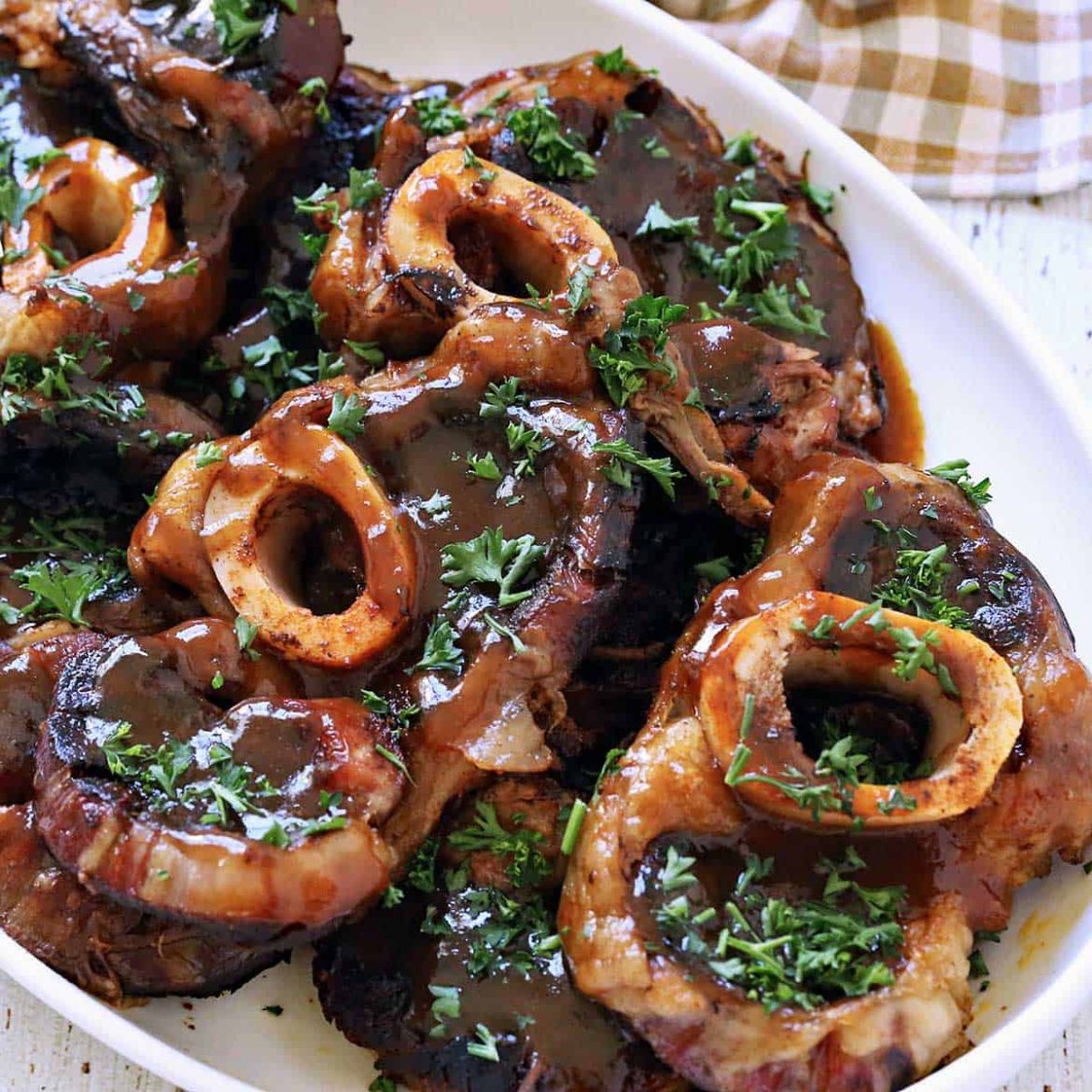These beef shanks are superb. Slowly cooked and smothered in a rich sauce, they are tender and flavorful.
If you enjoy slow-cooked meat, you will love this dish. And, thanks to using the slow cooker, it’s almost entirely hands-off!
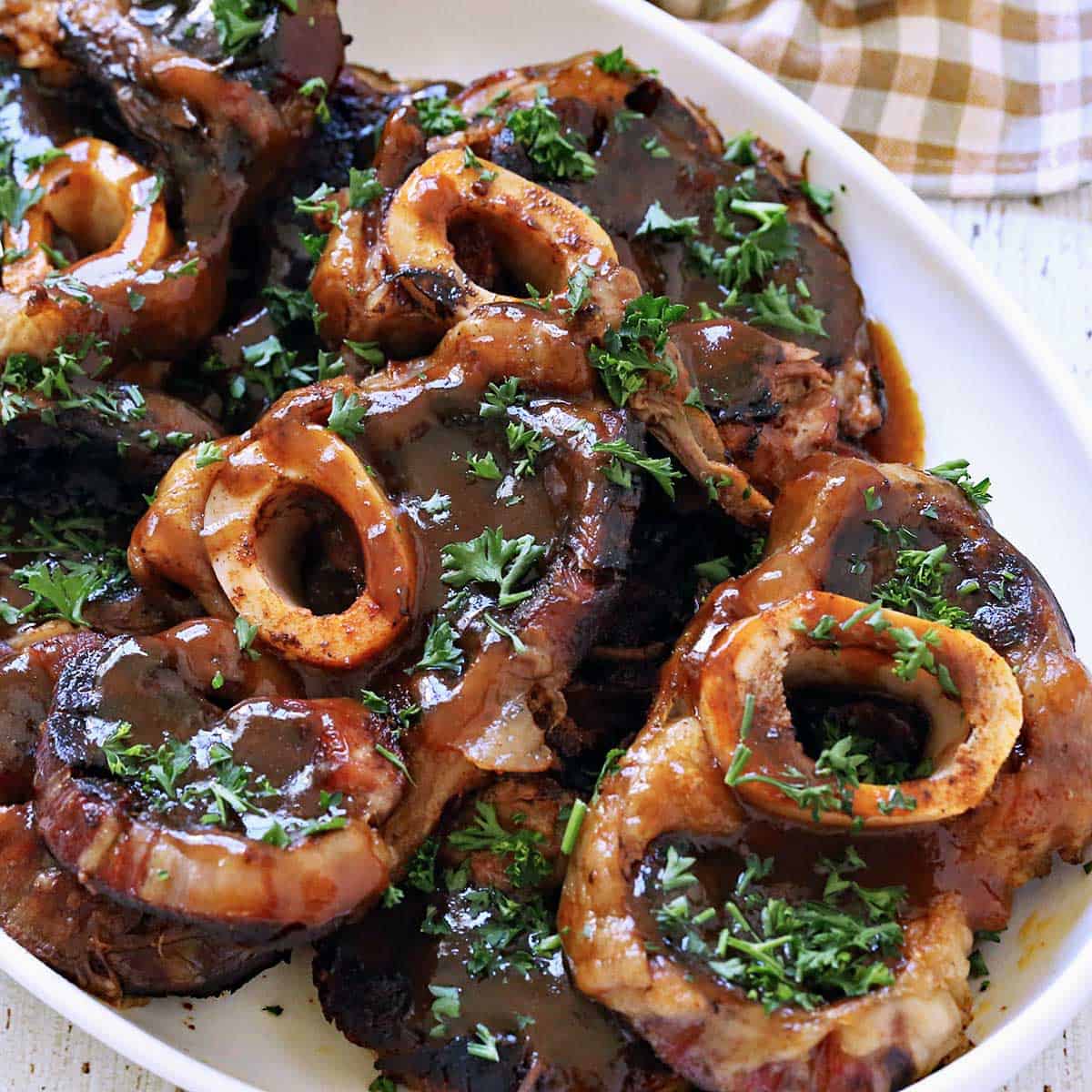
Beef shanks are typically used in osso buco recipes. These recipes call for browning the shanks first, then braising them with vegetables.
My recipe is easier. I simply place the shanks in the slow cooker with beef stock and spices and braise them. The result is lovely: Tender meat that literally falls off the bone, covered in rich gravy. Much like lamb shanks, this is comfort food at its best, perfect for fall and winter.
Jump to:
Ingredients
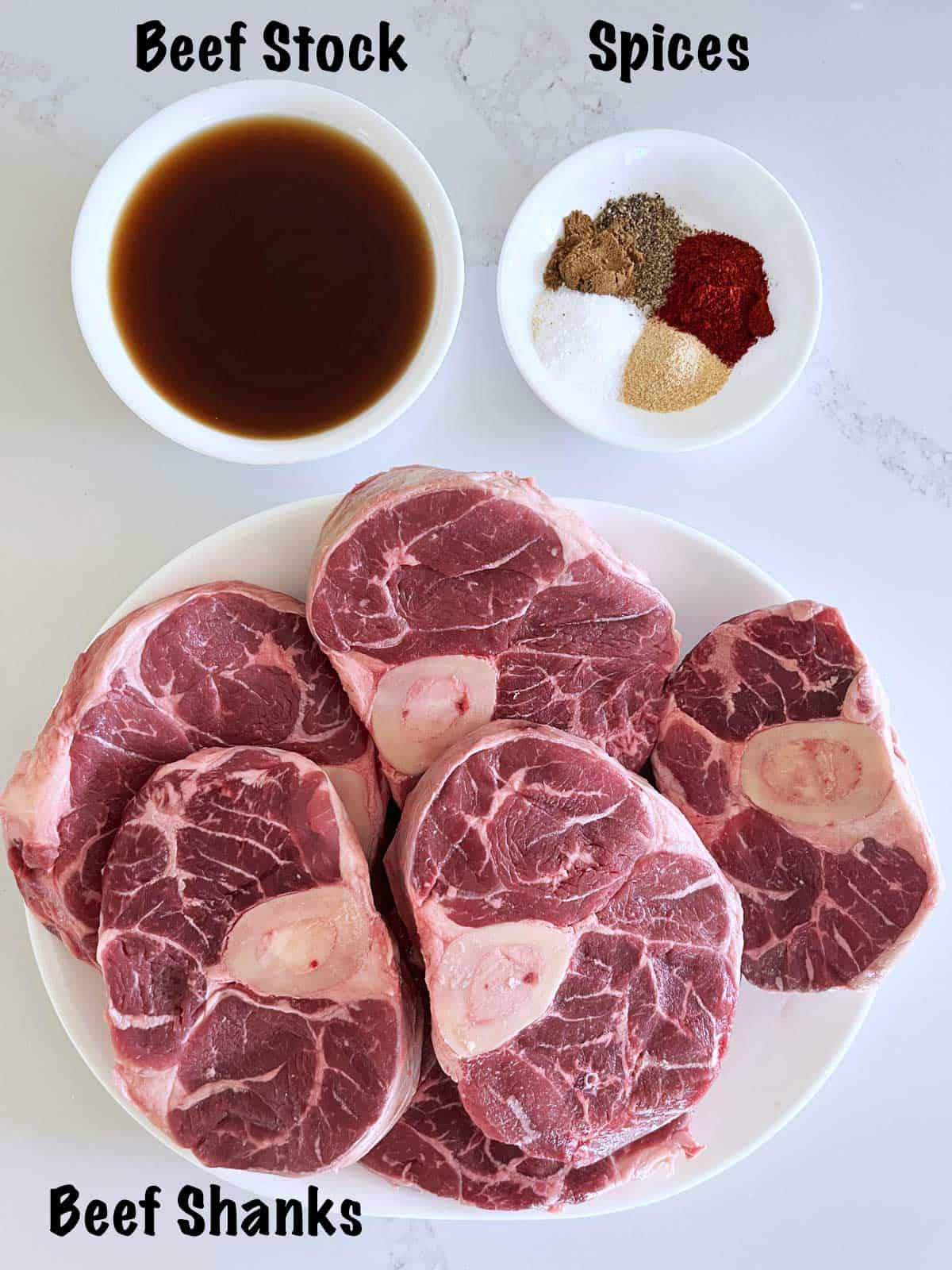

Here’s a look at the ingredients needed to make this recipe. The exact measurements are listed in the recipe card below.
To season: Kosher salt, black pepper, garlic powder, smoked paprika (here’s a look at types of paprika), and ground cumin.
Beef shanks: I use six of them in this recipe. I sometimes find them at Whole Foods Market. When I don’t, I order them online at Vincent’s Meat Market. This Bronx butcher ships its products overnight in the USA. They are chilled, not frozen. This is what the packaged shanks look like:
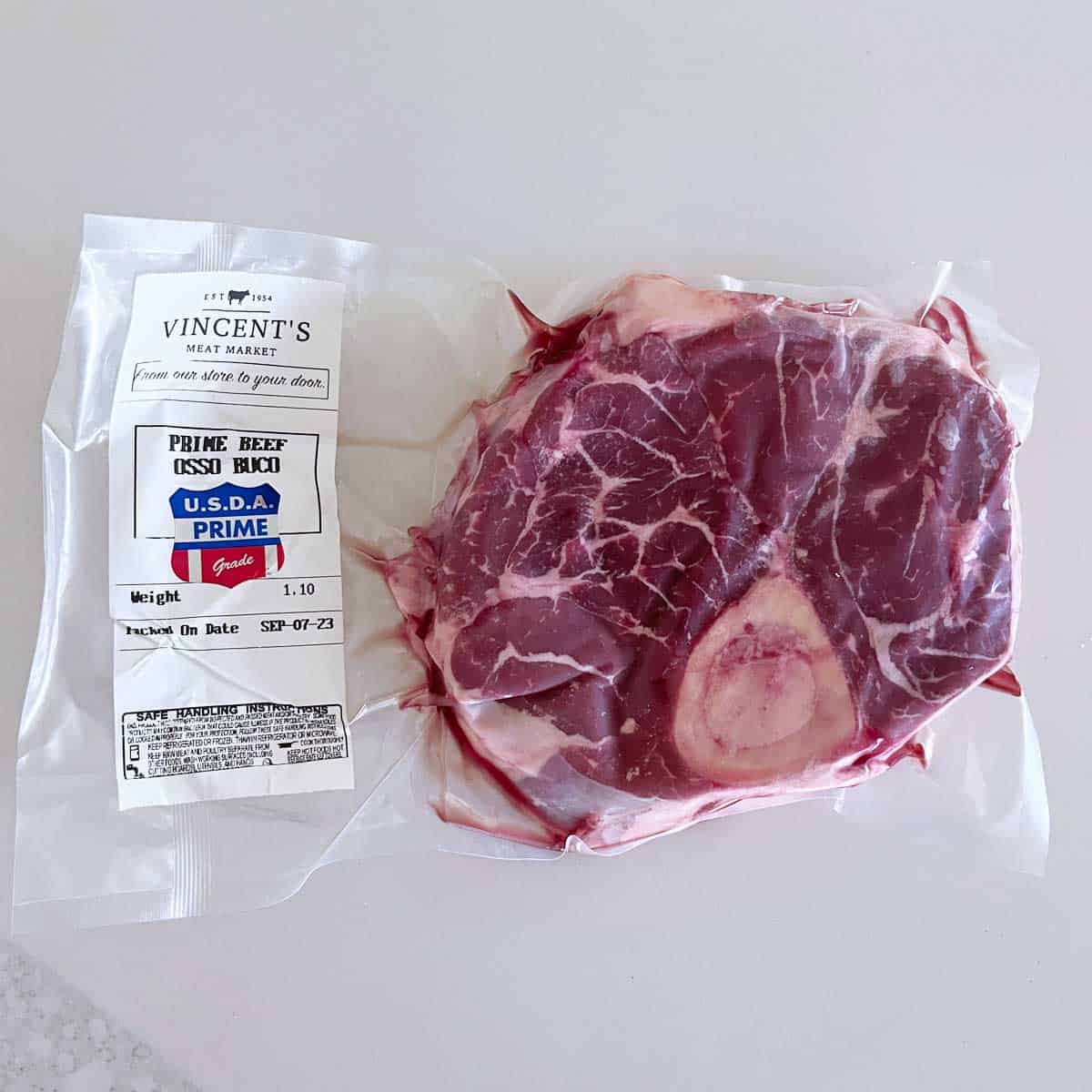

Beef stock: You’ll need about a cup. Add it to the bottom of your slow cooker before adding the shanks.
Cornstarch: This is an optional ingredient. It helps thicken the cooking liquids, but you can reduce them into a glaze without it.
Parsley: Another optional ingredient used as a garnish.
Variations
- The best way to vary this recipe is to experiment with different spices. Sometimes, I use regular paprika instead of smoked paprika. I also like to add ½ teaspoon of dried thyme. If you like spicy food, add ½ teaspoon of red pepper flakes.
- You can use chicken broth or water if you don’t have beef stock. The sauce won’t be as rich, but it will still be excellent.
Instructions
Here’s an overview of the steps needed to make this recipe. The detailed instructions are listed in the recipe card below.
Season the shanks with the spices. Pour the beef stock into the bottom of your slow cooker pan. Add the shanks, layering them. Cover and cook on LOW for 6 hours.


Briefly broil the shanks to brown the fat. Turn the broiler off and set the oven to warm. Keep the shanks in the oven while you reduce the cooking liquids.
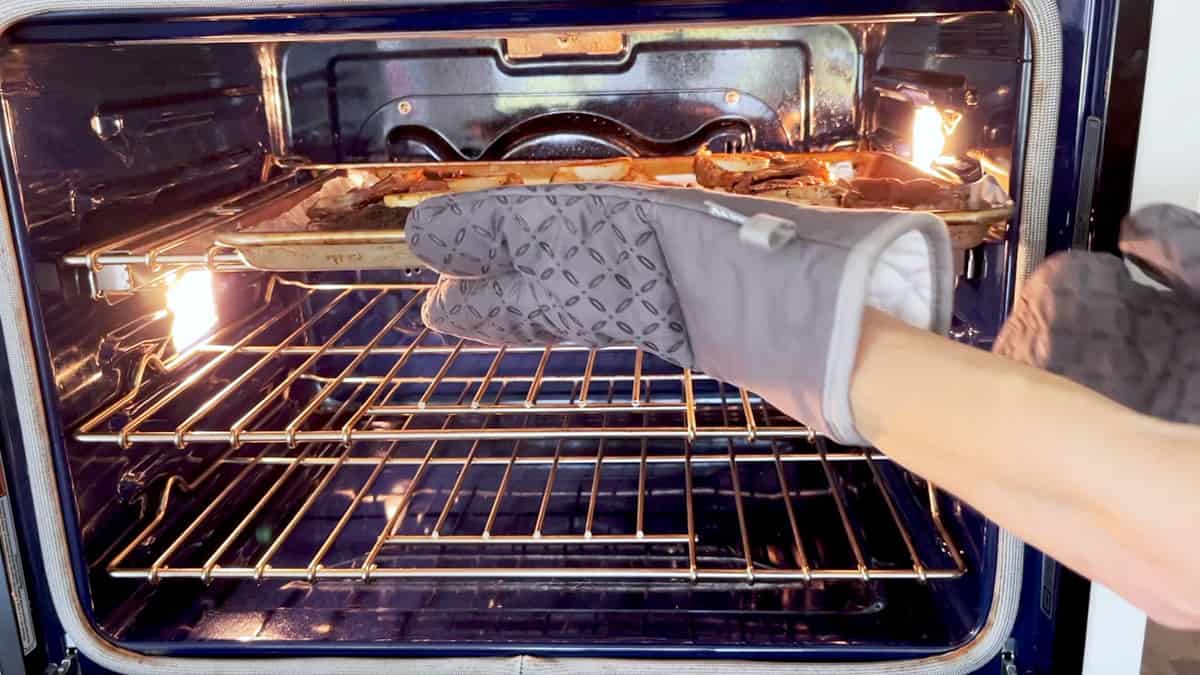

Strain the cooking liquids into a measuring cup. Remove the fat layer from the top and pour them into a medium saucepan. Heat them over medium-high heat, whisking often, until they thicken into a rich sauce.
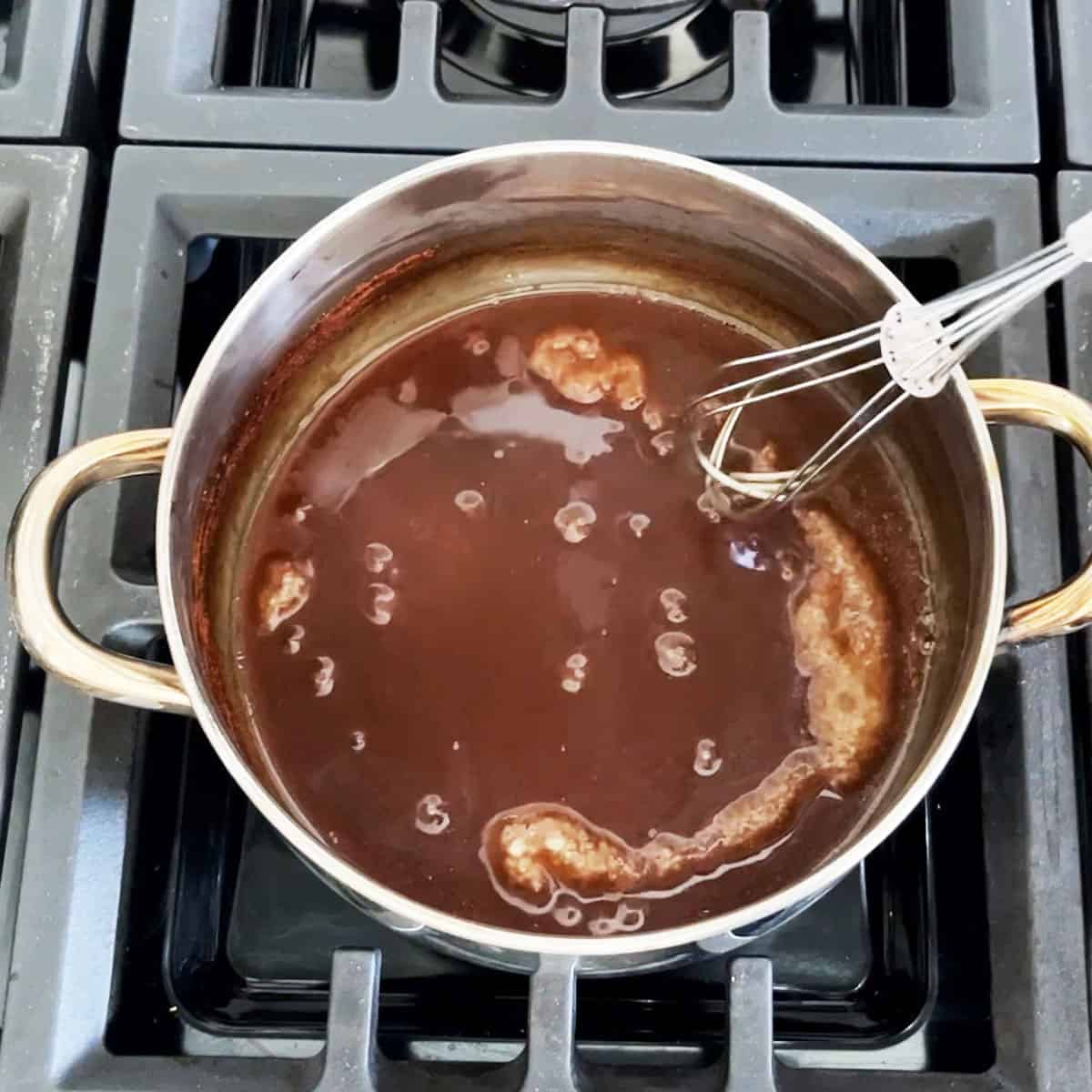

Spoon the sauce on the shanks and sprinkle them with chopped parsley for garnish. Serve immediately.
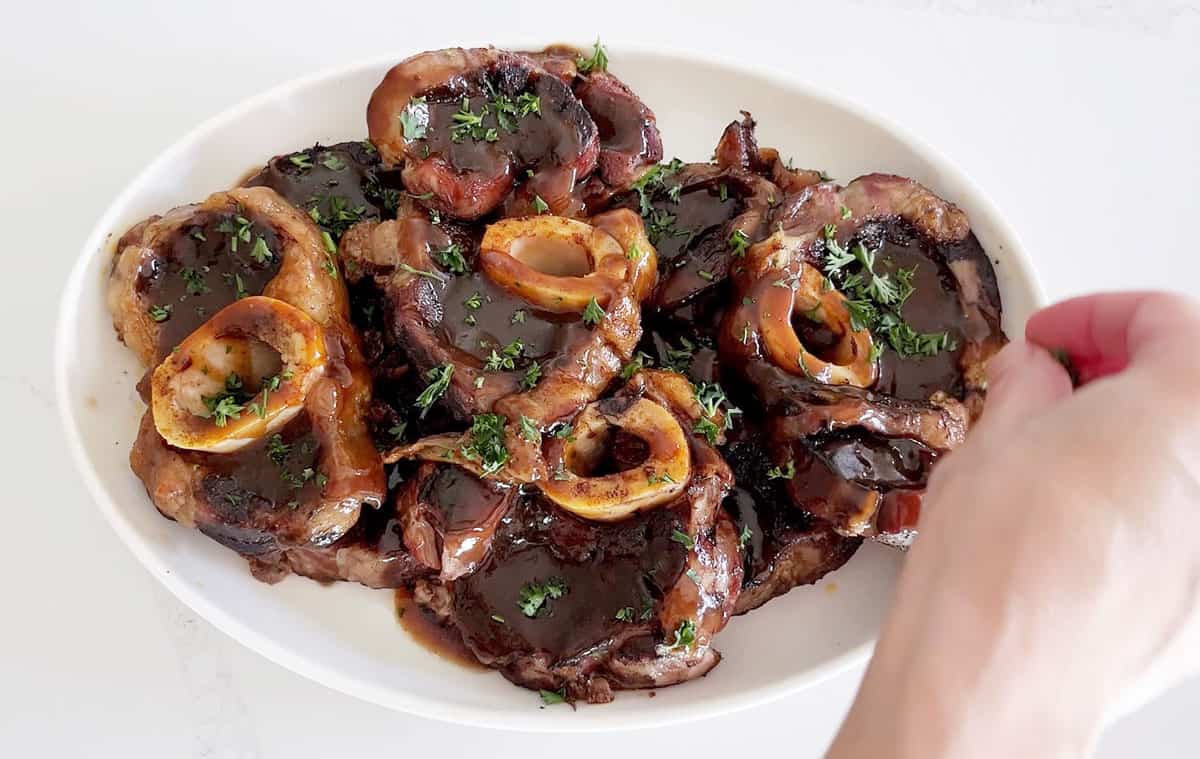

Expert Tips
- The shanks will start to smell amazing after four hours, but cook them for six hours to ensure they are tender.
- Cleaning tip: Reducing the cooking liquids will result in the saucepan needing major scrubbing. Simply fill it with hot, soapy water, let it sit overnight, and then, the next day, scrub it with a stainless steel scrubber (assuming it’s not a nonstick pan).
- The reason for making a cornstarch slurry instead of stirring the cornstarch directly into the cooking liquids is that cornstarch added directly to hot liquid can turn into clumps.
- I experimented with browning the shanks on the stovetop before placing them in the slow cooker. My conclusion is that this extra step is unnecessary. You can achieve the same result with much less effort by briefly broiling the shanks after they are cooked.
- If you buy the shanks online, you’ll probably get different sizes – see the photo below. That’s fine. You can cook them all together.
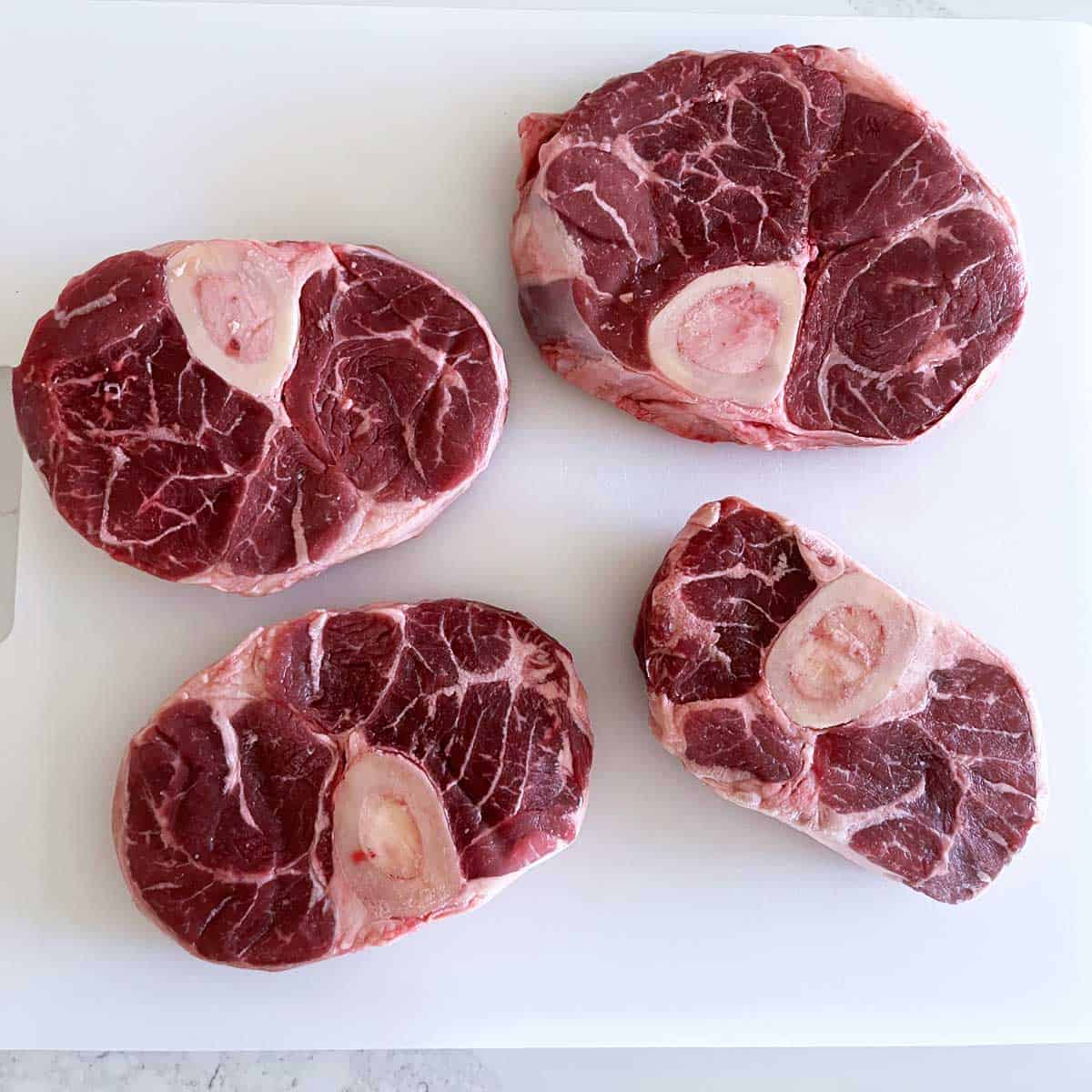

Recipe FAQs
It’s a cross-cut of meat from the lower leg of the cow. It contains a bone with marrow in the center:
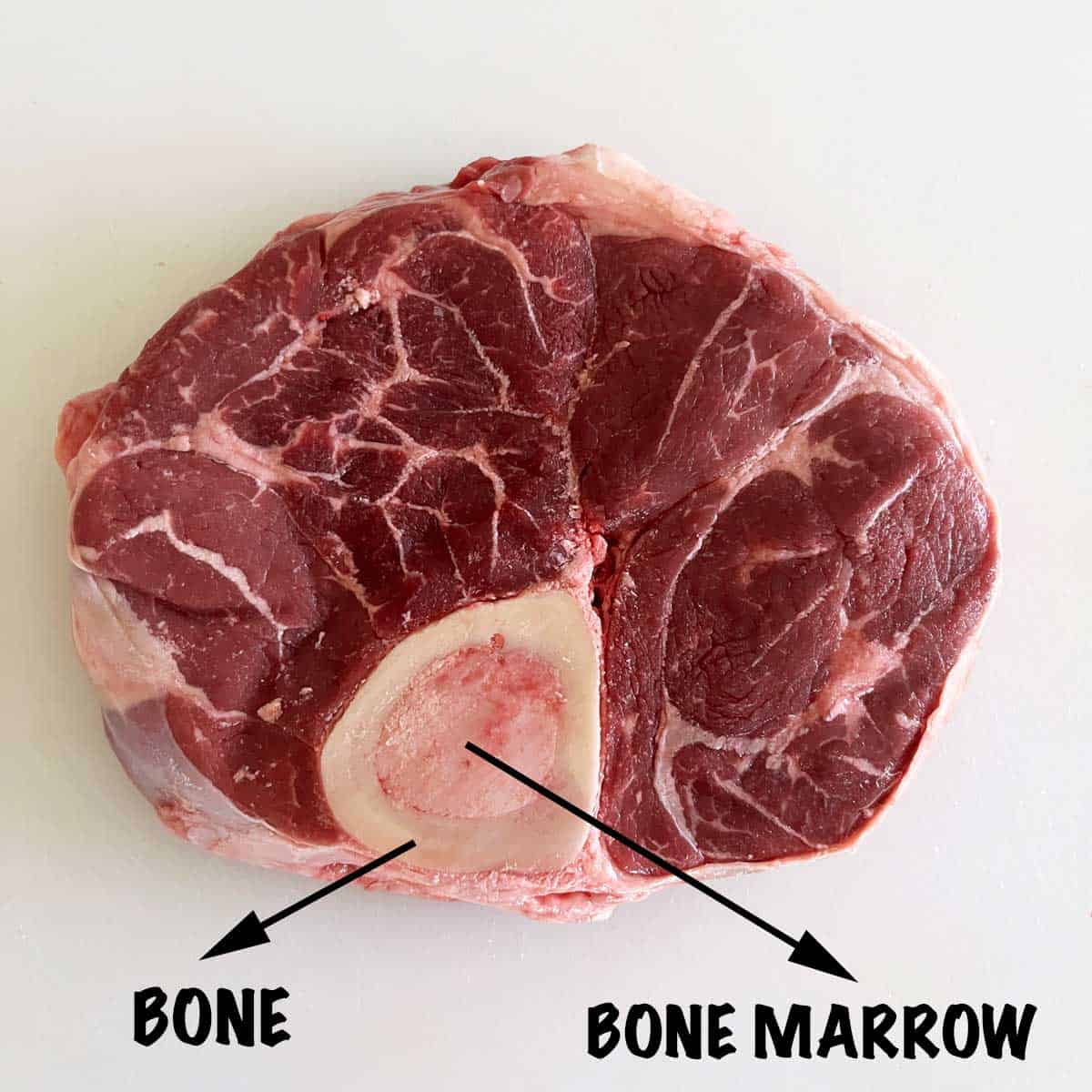

I tried that, and the answer is yes, but it won’t be as good. This glaze is especially rich and flavorful because some of the bone marrow has melted into it. Here’s what the shanks look like without the glaze:
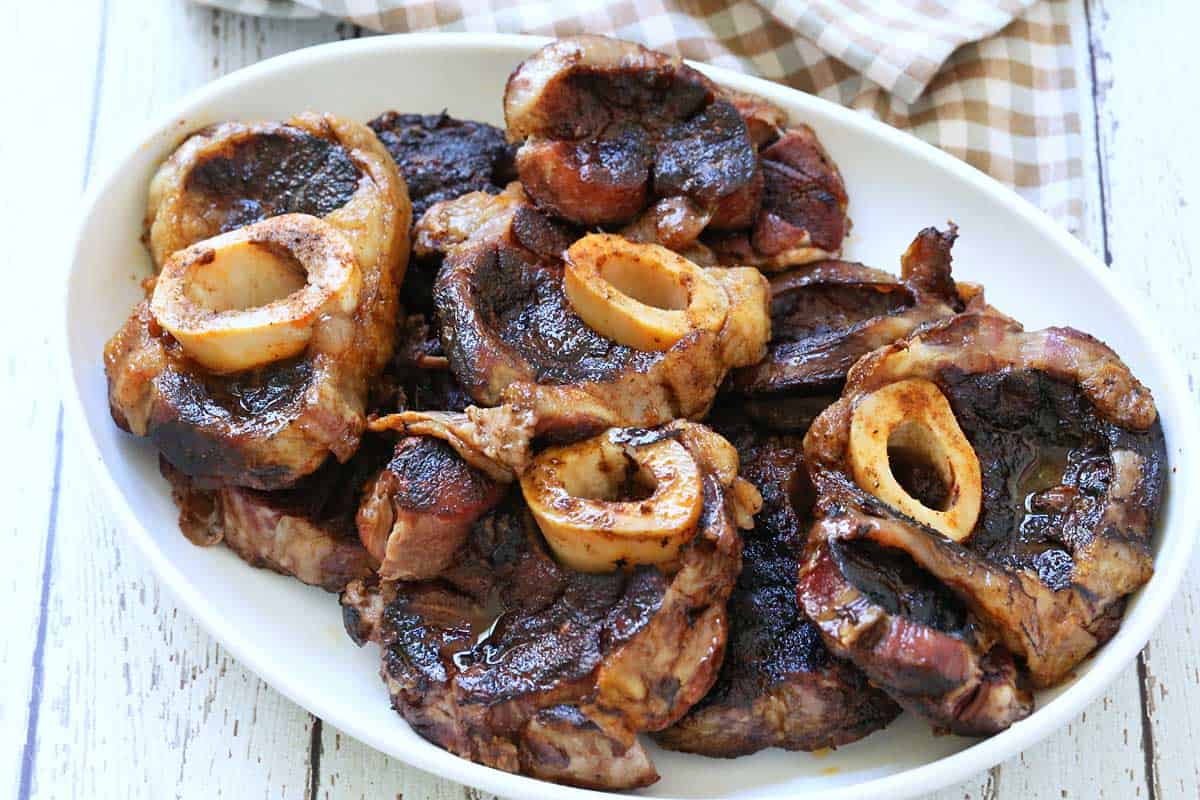

If you leave the fat in the liquids, as you reduce them into a sauce, the sauce could break – separate into two components – liquid and fat. Removing most of the fat helps ensure a smooth sauce.
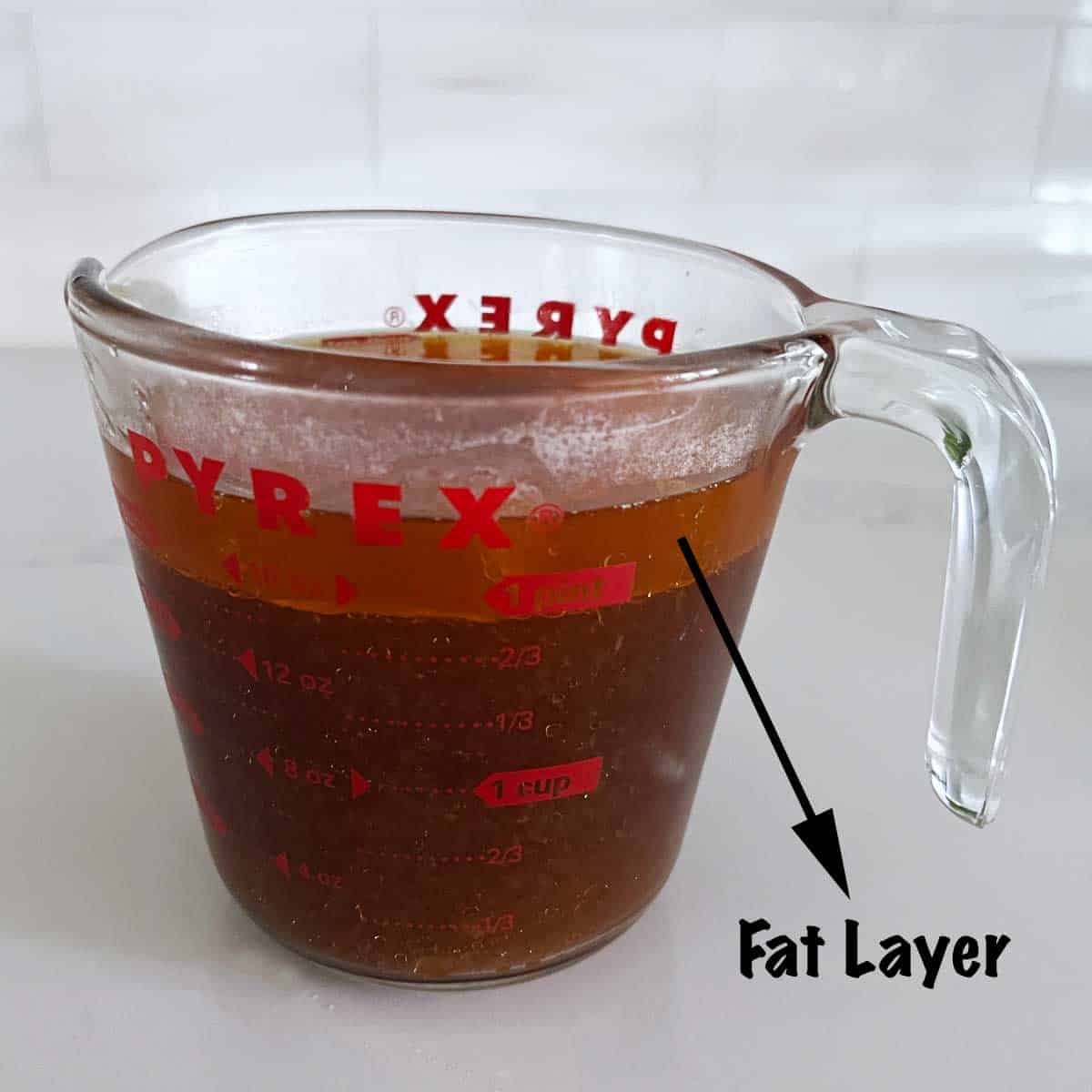

Almost. Osso Bucco is an Italian dish traditionally made from veal shanks but often made with beef shanks. “Osso Buco” translates to “bone with a hole,” referring to the bone marrow at the center of the shank.
Storing Leftovers
You can keep the leftovers in the fridge, in an airtight container, for up to four days. Reheat them in the microwave, covered, at 50% power.
Like most slow-cooked meats (such as pot roast, goulash, or beef cheeks), the leftovers are excellent. In the photo below, I served them with a side of roasted broccolini:


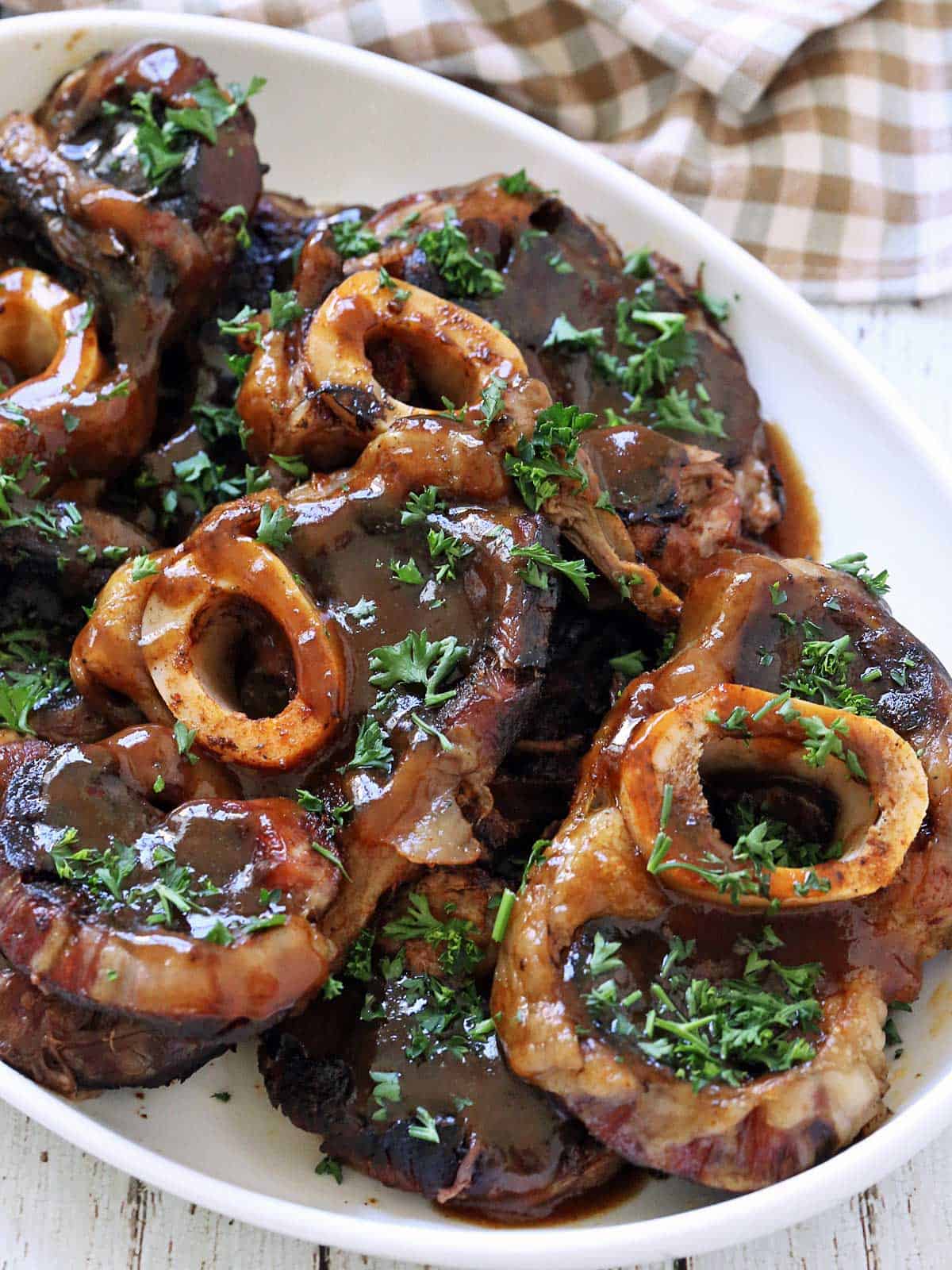

More Beef Recipes
Foodie Newsletter
I send out a weekly newsletter with a recipe and tips. Want these recipes in your inbox? Subscribe today! You can unsubscribe at any time.
Recipe Card
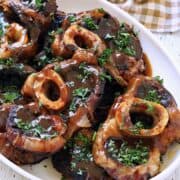

Save this RecipeSaved!
Pin Recipe
Share on Facebook
Print Recipe
Slow Cooker Beef Shanks
These beef shanks are superb. Slowly cooked and smothered in a rich sauce, they are tender and flavorful.
Servings: 6 servings
Calories: 276kcal
Prevent your screen from going dark
Instructions
-
In a small bowl, mix the salt, pepper, garlic powder, smoked paprika, and ground cumin.
-
Pat the beef shanks dry with paper towels. Season both sides with the spice mixture, gently pressing with your hands to ensure the spices adhere to the meat.
-
Pour the beef stock into the bottom of a 6-quart slow cooker pan.
-
Add the beef shanks, layering them.
-
Cover and cook on LOW for 6 hours.
-
Heat your broiler on high (450℉). Line a rimmed baking sheet with foil. Remove the shanks from the slow cooker and place them on the baking sheet. They are so tender at this point that some of them might fall apart. That’s OK and expected.
-
Broil the shanks to brown the fat for 1-2 minutes, keeping a close eye on them to ensure they don’t burn. Turn the broiler off and set the oven to warm (170℉). Keep the shanks in the oven to keep them warm while you reduce the cooking liquids.
-
Strain the cooking liquids into a measuring cup. Place the cooking liquids in the freezer for 10 minutes. This will help solidify the fat layer and make it easy to remove it from the top. Remove the fat layer from the cooking liquids using a spoon. Pour the liquids into a medium saucepan.
-
Prepare a cornstarch slurry by mixing the cornstarch with 1 ½ tablespoons of cold water. Stir the cornstarch slurry into the cooking liquids.
-
Heat the mixture over medium-high heat, whisking often, until it thickens into a rich glaze. This should take about 10 minutes.
-
Arrange the shanks on a serving platter or individual plates. Spoon the glaze on top. If desired, sprinkle them with chopped parsley for garnish. Serve immediately.
Notes
- The shanks will start to smell amazing after four hours, but cook them for six hours to ensure they are tender.
- Cleaning tip: Reducing the cooking liquids will result in the saucepan needing major scrubbing. Simply fill it with hot, soapy water, let it sit overnight, and then, the next day, scrub it with a stainless steel scrubber (assuming it’s not a nonstick pan).
- The reason for making a cornstarch slurry instead of stirring the cornstarch directly into the cooking liquids is that cornstarch can turn into clumps.
- I experimented with browning the shanks on the stovetop before placing them in the slow cooker. My conclusion is that this extra step is unnecessary. You can achieve the same result with much less effort by briefly broiling the shanks after they are cooked.
- If you buy the shanks online, you’ll probably get different sizes. That’s fine.
Nutrition per Serving
Serving: 1 shank | Calories: 276 kcal | Carbohydrates: 3 g | Protein: 45 g | Fat: 8 g | Saturated Fat: 3 g | Sodium: 583 mg
Disclaimers
Cup measurements refer to the standard American cup, which is 240 milliliters. Most of my recipes are low-carb (or keto) and gluten-free, but some are not. Please verify that a recipe fits your needs before using it. Recommended and linked products are not guaranteed to be gluten-free. Nutrition info is approximate, and the carb count excludes non-nutritive sweeteners. Nutrition info may contain errors, so please verify it independently. Recipes may contain errors, so please use your common sense when following them. Please read these Terms of Use carefully before using any of my recipes.
Share this Recipe
Reader Interactions
Be the first to comment on this recipe – your comment helps others!

